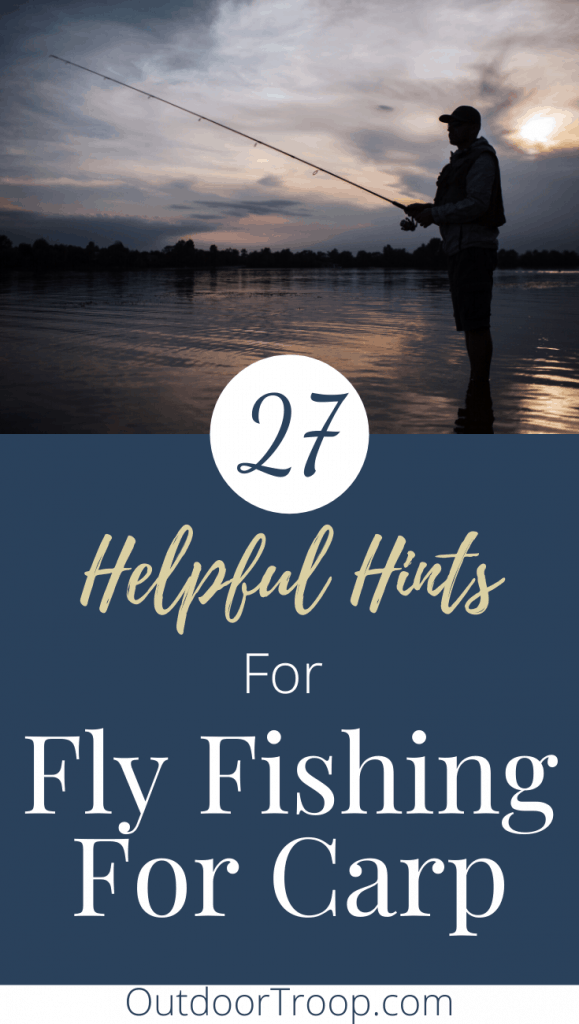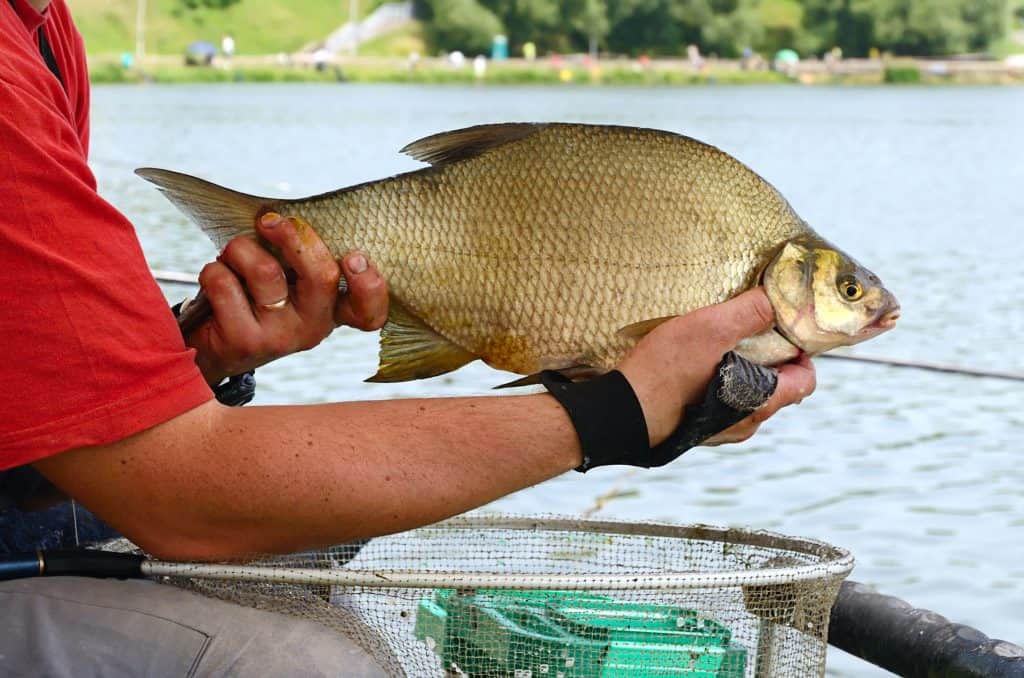
Fly Fishing is pretty much the coolest thing to happen since sliced bread, but sometimes fishers need some helpful tips when it comes to fly fishing, especially for carp. I love to fish and hope that this article makes catching carp on the fly enjoyable for you as well.
Lots of people love fly fishing, but it has been a fairly recent movement that has prodded fly fishers and none fly fishers alike to jump onto the carp fly fishing boat.
Although they have typically been seen as pest fish, carp fishing has become a new favorite hobby, and folks are loving it.
Tip #1: Carp Splashing on Top of the Water Aren’t Interested
One of the most important things to know about carp is what a hungry carp looks like and what a mating carp looks like. Some people confuse activity with hunger when really it is something very different.
When Carp are splashing around on the top of the water they will not take any bait 100% of the time. Why? Because they are mating and are in full mating mode.
This means that they are not hungry, tired, scared, or interested in anything other than the mating process that is going on. So when you see those slashing carp close to the top of the water move on and find some other carp to bait.
Tip #2: Approach Sunbathing Carp with an Unweighted Fly
Sunbathing carp aren’t really all that interested in food, typically, but you can get them to bite if you use the right kind of fly and are very patient. For sunbathing carp, you will want to use an unweighted fly.
This will allow you to keep your fly close to the surface and light so that you can manipulate it to catch your intended carps eye. If you are able to do this you can interest a carp enough to leave is sunbathing and come after your fly.
Tip #3: Fast-Moving Pods are a Waste of Time
One of the other first things to learn about carp fishing is that carp who are moving in schools very quickly are normally scared or they are on a mission.
That means that they are not interested in finding food because they are either worried about becoming food or too focused to be thinking about food. So if you see a fast moving school look elsewhere for your carp to target.
Tip #4: Get Your Fly Below and In Front
Slow moving carp are a great target for carp fishing. They normally are swimming around looking below them for food, so it is the perfect time for anglers to act.
With most fish, you can plant your fly close to the surface of the water because the fish will be looking around and up for food, but carp are bottom feeders so they never look up when hungry, but always down.
The best way to get your targeted carp to bite is to cast your fly downstream and then bring it in nice and low, but not too low. You want it to be under you carp but still close enough to entice it.
Then once your carp starts giving chase you wait for it to hook itself and then begin reeling it in. If you always remember to get your fly under your carp you will be on your way to catching yourself a nice sized beauty.
Tip #5: Look for Heads Down and Tails to the Sky
If you really want to catch a carp and you are looking for signs that the carp is ready to bite the main two clues to look for is head down in the mud and tails in the air.
When you see this you know that your carp is not only hungry but they are on the hunt. This gives you the upper hand in baiting and reeling in this nice river monster.
Quick Tip: If you are looking for a nice enticement for some carp, try using canned sweet corn. They love it.
Tip #6: Boring Fly Patterns Beat Snazzy Patterns
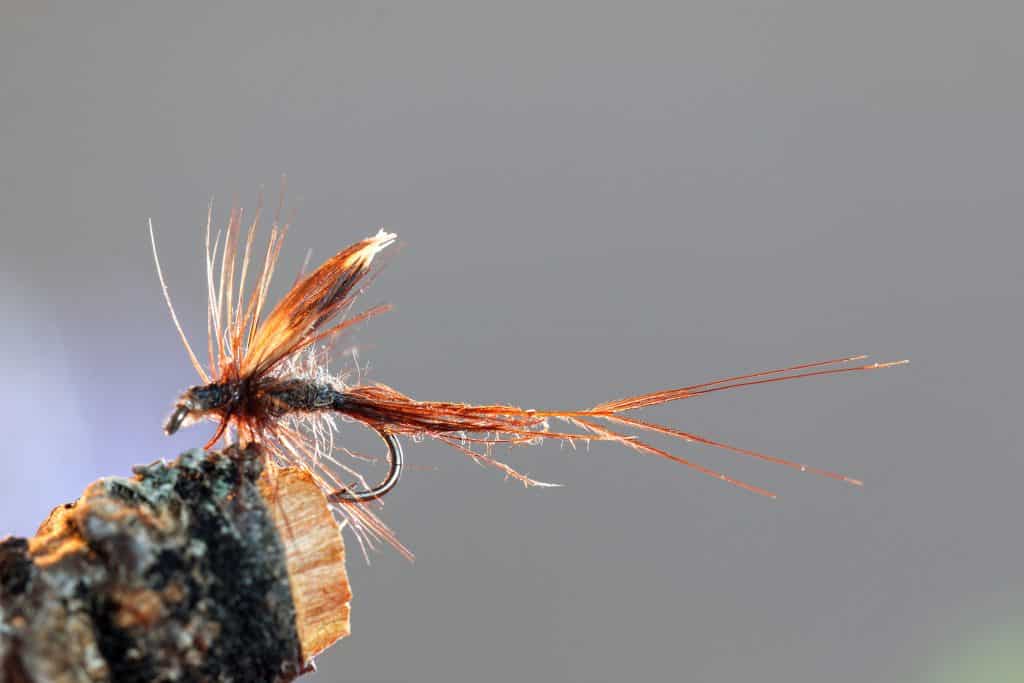
In order to bait carp, you need to use the right color and style. Bright flashy flys normally will put off your carp instead of attracting it. So while they may be more attractive to humans and other fish, carp are not biting for them.
Carp generally go for more earthy colored bland flys that have more boring patterns. They normally bite for colors like burnt orange, olive green, black, and brown. This makes sense to me considering they are bottom feeders.
Fun Fact: It is rumored that western carp like chasing streamers, unlike the eastern carp.
Tip #7: The Best Carp Casters are Those Who Practice
Before any carp fisher gets into the water or begins their search on land for the nearest hungry looking carp, they should be practicing their casting on land.
It may seem silly, but most anglers will only get one or two casts in a day when carp fishing and no fisherman wants to ruin one of those potential catches by smacking the water too hard or under casting.
That is why any veteran carp fisher will tell you to take a few practice casts to make sure that you know just how much pressure and strength to apply in order to throw the perfect cast.
Tip #8: Slow and Steady Wins the Carp
This may seem like a redundant tip because all fishing is slow and steady but with carp, you have to take extra precautions to be patient and move slowly.
No one wants to get into the perfect casting position only to frighten their prey away. And you just might with carp as they are extremely easy to spook, so remember to be slow and steady. #NoRipples
Tip #9: Don’t Forget Targeting and the Drag-and-Drop
Targeting is so important when fly fishing for carp. People just are not successful in blind fishing for carp. They need to be able to see their target and its mouth.
One of the best ways to get a carp to chase and bit your fly is by using the drag and drop. You cast your line downstream of the carp and slowly reel it in.
As you reel it in you let it drift and drop lower so that it is below the eye level of the carp. Carp look down for food, so then you have perfectly placed your fly so it looks incising to your carp.
Tip #10: Know What Flys to Use and When
Obviously, flys are important to fly fishing, but especially with carp fishing. Having the right fly on could make or break your fishing day. You never want to be caught using a weighted fly when really what you needed was an unweighted fly.
| Fly Weight | |
| Sunning Carp | Unweighted |
| Slow Cruising Carp | Medium/Heavy weight |
| Bottom Feeding Carp | Heavy/Medium weight |
Tip #11: Remeber the 3 Feet Zone For Carp
I once heard someone say that in order to have a good carp fishing day, to remember the 3 feet zone. When I inquired to learn more they said that one of the best ways to ensure a carp catch was to be about 3 feet away from your intended target.
This made a lot of sense to me since carp fishing is best done visually and by target catching, so I have adopted it into my repertoire of carp fishing tips and ideas.
Tip #12: Expect to Fail… A Lot
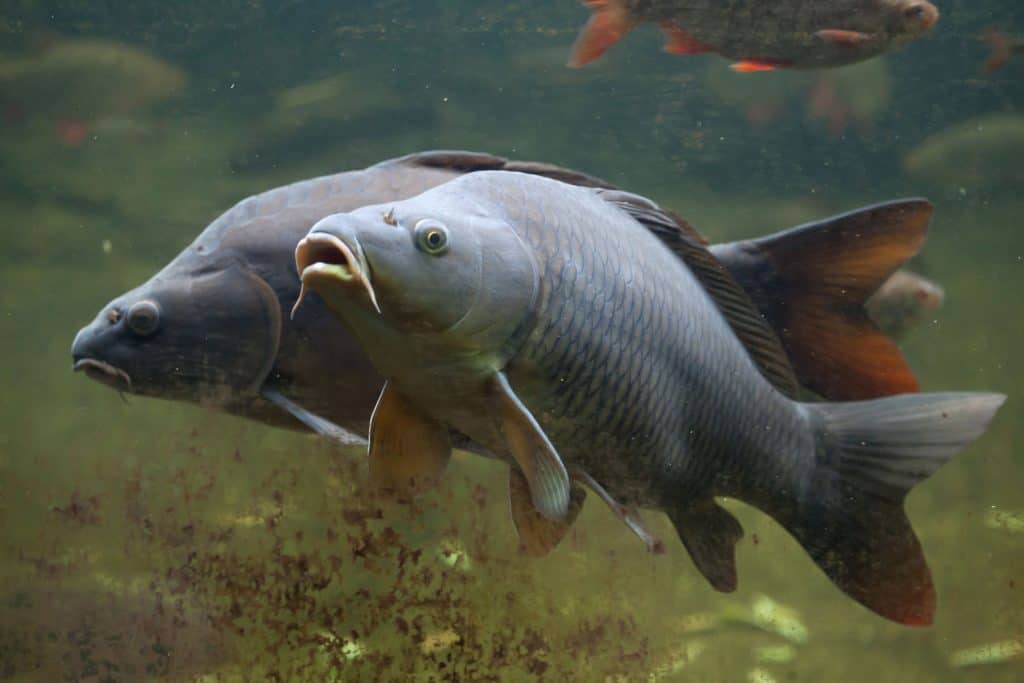
Carp are a hard fish to catch which is why so many people have begun catching them for sport. But because they are hard to catch it can become infuriating to leave the day without reeling any fish.
So one of the best pieces of advice about carp fishing that I’ve ever received is to expect to fail. The first few times anyone goes carp fishing if they expect to fail they save a lot of headaches and anger.
Plus their day out on the river or lake doesn’t become a complete waste. And if they happen to catch one then their expectations have been exceeded and it becomes even more exciting.
Tip #13: Fly Line Color Can Spook Carp
We have already talked a lot about how carp are easily spooked and it will continue to come up again and again because it is a predominant problem that comes with carp fishing.
Most people don’t know though that the color of their fly line can be a culprit of some of those random spooking. Carp just don’t like flashy colors, so if you are fishing with neon or brightly colored line it could send the whole school of carp running.
Think about how frustrating it would be to sneak up on a school of carp and throw out the perfect cast, only to have your fish scared away by the color of your line.
It would suck. Neutral colored lines are preferred in carp fishing so that you can go home happy after having a very successful day fly fishing for carp.
Tip #14: Tred Softly Around Carp
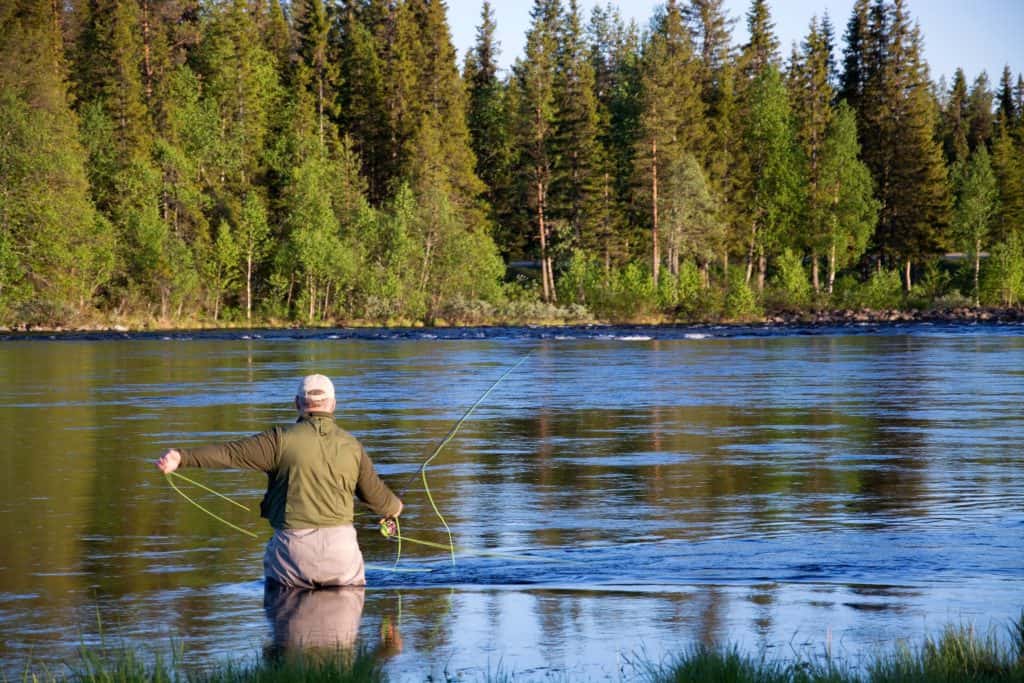
When I think of carp I think of toddlers who have just been rocked to sleep and you have to tiptoe quietly out of their room so they don’t hear you and ask for another story.
Carp are just like those little babies, they are easily startled and alarmed by sudden movements and loud sounds. The means that anglers need to walk quietly and slowly whenever they are around the carp.
This also applies to the actual casting of the line. Like we talked about before, if your line makes a loud splash or hits the water funny you can totally spook away all of the carp you were just trying to catch.
So tread softly with your bodies, with your gear, and with your casts when you are around carp. Many a fishing day got ruined by spooked carp and noisy people.
Tip #15: Wash Up Before Carp Fishing
The may sound like a weird tip, but wash your hands before you go carp fishing. When you are out fly fishing it is reasonable to assume that you have applied sunscreen and bug spray before going out on the water.
But what a lot of carp fishers are finding is that the carp they are fishing for can smell differences and changes. So if your hands smell like sunscreen it can become challenging for you to make a catch.
A lot of carp fishers have found that if the wash their hands and arms before they begin fishing the carp are less likely to smell the difference. You also need to be careful not to wear strong smelling colognes or perfumes as those could set the carp off as well.
Tip #16: Make Sure You Have a Tight Line
A lot of beginner carp fishers make the mistake of leaving slack in their line. If this happens and you bait a carp, a slack line will probably snap from the force that the fighting fish applies.
Carp are heavy fighters and they will fight with all they have, so keeping that line tight gives anglers the upper hand when trying to real these monster fish.
Tip #17: Keep Your Rod Tip on the Water
It is important to remember to keep your line as tight as possible. One of the great tips that help make this possible is keeping the tip of your rod as close to the water as possible.
That way you don’t get any extra slack in the line. Plus it helps the angler control and manipulate their fly so that it looks appealing to the targeted carp.
Tip #18: Use a 7-9 Weight
If you are used to fly fishing for trout or panfish, your rod is probably a 4-6 weight, but if you are more of a salmon or bass fisher you probably use a 7-9 weight rod.
Because carp fight back once hooked, it is important to get a heavier pole to pick up the slack. If you are normally a trout fisher but you want to try carp, using a 6 weight won’t be bad, but if you really want to fish for carp then you need to upgrade your pole.
It seems like such a little trivial thing, pole weight, but it is what makes and breaks some carp fishers. If you want to go after bigger and stronger fish you need the equipment that will back you up.
Tip #19: Hooksets are More Unsuccessful Than Rewarding
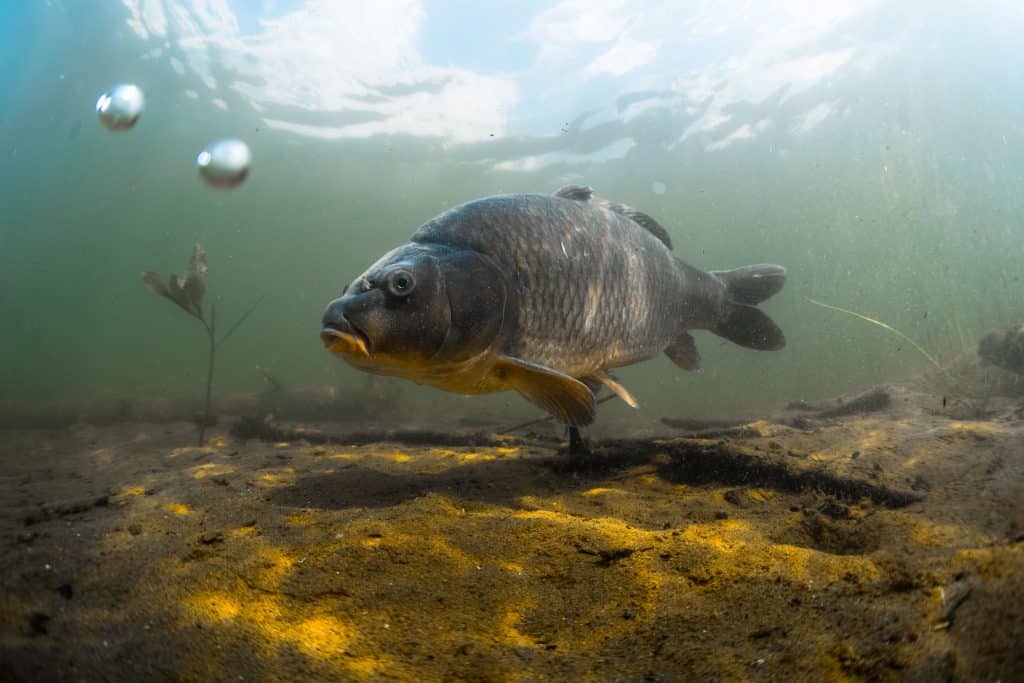
Most fly fishers are used to hook setting the trout or bass that they are fishing for, but with carp using a hookset is normally more harmful than it is helpful.
Because carp are slow fish it takes them a long time to actually bite down on the hook, so when an angler feels a bit of pressure on the hook and uses a hookset often the hook will be yanked out of the carps mouth and the fish will become startled.
That is why you should target fish like is mentioned below, and also why using a slow strip is normally more effective. That way when you feel and see the bite you can slowly strip the pole to the side and if it slips out of the carps mouth you haven’t startled the fish and lost the element of surprise. You can still bait the carp and wait for a second bite.
Fun Fact: Carp have rather soft mouths and are easier to hook than other fish.
Tip #20: Target Cast When Flying for Carp
A lot of anglers are used to fly fishing for trout blindly or fan casting for bass, so they aren’t always target fishing. But when you are fishing for carp the only way to get a bite is to target cast.
A lot of people go about this differently, some need to be in the water and move slowly closer and closer to their target, while some prefer to do it from the shore. Both have their upsides and their downsides.
| Dry Casting | Wet casting | |
| Benefits | 1. You make less noise 2. You don’t disturb the water 3. Less chances to frighten the fish | 1. You can get very close to your target 2. You don’t have to worry as much about light interference 3. You can see whether your fish bit or not |
| Disadvantages | 1. It can be harder to see where to cast and your target 2. You have to worry about reflections on the water 3. You have to work by feel instead of sight sometimes | 1. You have to move very slowly so you don’t disrupt the water 2. You have a bigger chance of scaring away your carp 3. If you startle your carp you may have trouble finding new carp to target |
Tip #21: Research Carp Before Fishing for Them
Fishing for carp in the east is very different than fishing for carp on the west coast fly fishers from both areas have talked about the many similarities and differences that are found when fishing for carp.
That’s why it can be very helpful to research carp fishing in your area before you set out. While most of the basics will be the same, you can learn some valuable information that could take you from what would have been an unsuccessful fishing day to a great fishing day.
This ties in well with the previous tip that practicing before fishing for carp could be the key to whether or not you have any catches that day. The same goes for research. It is important and can even help you with your pre-fishing practices.
Tip #22: Carp are Slow Eaters
One of the biggest mistakes that anglers make when fishing for carp, is moving the line to quickly and pulling the hook out of the carps mouth.
This is why it is so important to be close to your carp and to be able to see it. If you can watch it open its mouth and then wait for it to slowly bite, you will have success.
Then when you feel the pressure of the bite you can use a long slow strip to make sure he is hooked. That way you don’t risk pulling out the hook and startling your fish.
Fun Fact: Most Anglers get 3 chances to hook a carp in one day.
Tip #23: Downstream Casting Gets Carp
A lot of first-time carp fishers make the mistake of cast their fly upstream instead of downstream of the carp. This is problematic because this causes the carp to become startled.
As we talked about before, carp are one of the easiest fish to startle, so when you cast a line you need to be able to sneak it up to the carp so they don’t become frightened.
When an angler casts their fly upstream of a carp what usually happens it the fly lands over the carp scaring it or the fly ends up behind the carp but to close to grab its interest without scaring it.
The most successful carp fishers cast their line downstream of the carp. That way they can angle the fly to move slowly towards the carp slightly below the intended target.
Tip #24: Snoop Around to Find Carp-Heavy Waters
If you are trying carp fishing for the first time, or you have tried before and found it hard to locate the carp, a great way to plan ahead is to ask others for carp heavy waters.
Half the battle of carp fishing is finding the carp so calling different local fly shops, fish and game, or sports goods places and they can normally point out the carp rich places.
Whether they know because they also love carp fishing or because they find them to be nuisances. But remember when in doubt carp can normally be found in large rivers.
Tip #25: Knots can Make or Break Your Fly Fishing
Quick Tip: To prevent your line from weakening or breaking from friction, get each knot damp before pulling them tight.
Every fly fisher out there knows that the knots they use are important and can change depending on the type of fish that you are aiming to catch. The same is to be said of carp fishing.
These tough fish are fighters and as we talked about before they need a lot of special gear, rods, or tricks.
In this case, there are six knots that work great when fishing for carp.
- Palomar Knot
- Figure 8 Knot
- Grinner Knot
- Knotless Knot
- Shockleader Knot
- Blood Knot or Half-Blood Knot
For most fly fishers these should be fairly familiar knots that are used quite often when fishing. But for some newer to fly fishing I will go over the basic uses and functions of each knot.
Palomar Knot
The Palomar knot is probably one of the most if not the most, useful knots when it comes to carp fishing. It is typically done with a monoline but it also works great with braided lines as well.
It is used for attaching all different kinds of terminal tackle to the end or near the end of the fishing line. Once this knot is tied it is important to make sure that all parts of the knot are drawn down together. If this knot is tied correctly it becomes close to being perfectly strong.
Figure 8 Knot
Figure 8 knots are great for swivel connections. They give the fisher more freedom of movement and also make it easy to change out the type of terminal tackle you are using.
Grinner Knot
If you want to be prepared and ready in every type of carp fishing situation it is important that you learn the grinner knot. It is known for being extremely reliable and essential basic.
Although it is not recommended on braided lines, this knot works great on monofilament lines and is normally preferred to using a half-blood knot.
Because it is so effective the grinner knot is known for being reliable and can be used on a vast range of line diameters which works great for carp fishing.
It is also known for keeping a high percentage of line strength which is important when trying to real in strong and stubborn fish like carp.
Knot-less Knot
If you like fishing with sweet corn, pellets, or boilies (dough balls) then using a knot-less knot is important. Along with Palomar knots, the knot-less knot is one of the most effective and useful for carp fly fishing.
One of the special things about knot-less knots is that they are known for aligning your hook on your leader so that you can have an increased chance of a solid hookset.
Shockleader Knot
If you are trying to tie a thinner line to a thicker line, then you would use a shock leader knot. Also known as the shore leader knot, this knot makes a neat and tapered knot that will help fishers cast neatly as well as being unlikely to snag on anything as a correctly tied knot will pass easily through rod guides.
Using a shock leader knot help prevent break-offs which can be rather dangerous to bystanders as well as causing a backlash on casting reels.
Blood Knot or Half-Blood Knot
If using a fluorocarbon line instead of a monofilament line then you will want to use a blood knot not a grinner knot. Looping on leads and swivels is normally what you would use a blood knot for.
Some people use half blood knots because it is reliable and easy to tie, but it is usually replaced by a grinner knot or a full blood knot. If you do decide to use one, it can be nice to make sure that you tuck the free end.
Tip #26: Spring Fishing is the Best Carp Fishing
Although many people fish for carp during the summer and fall, the best time to carp fish is in the spring. It is much easier and you often walk away with a few great catches instead of empty-handed.
Carp, like most fish, are fairly easy to catch during the spring because they are all moving to warmer water and while on that move they are stopping to eat.
When you fish in the summer and fall you may find that the carp you are finding are not showing many signs of hunger or are simply sunbathing near the top of the water. Neither of these situations is ideal for carp fishing.
Tip #27: Look to the Ducks to Find Carp
As odd as it may sound, carp have been known to follow ducks around. Whether this is because they love a free bread meal or they are hoping for more cover we do not know, but we know that often where there are ducks and geese their is also a pod of carp close by.
The word of caution that comes from using ducks to spy carp, is that you don’t ever want to injure any ducks, so you have to be careful to watch how close the carp and ducks are to each other.
This can be a helpful resource on a long day of carp fishing that is coming up empty-handed. As we all know, half of the battle with carp fishing is just getting a visual on them.
So if we can use simple and easy ways to locate our carp friends, the better fishing we will have. So if you feel like you are out of luck, try to spot some ducks and a school of carps may follow.
Related Questions
What flys do carp eat? Carp are mainly attracted to small and wiggle flys that will catch their attention but not startle them.
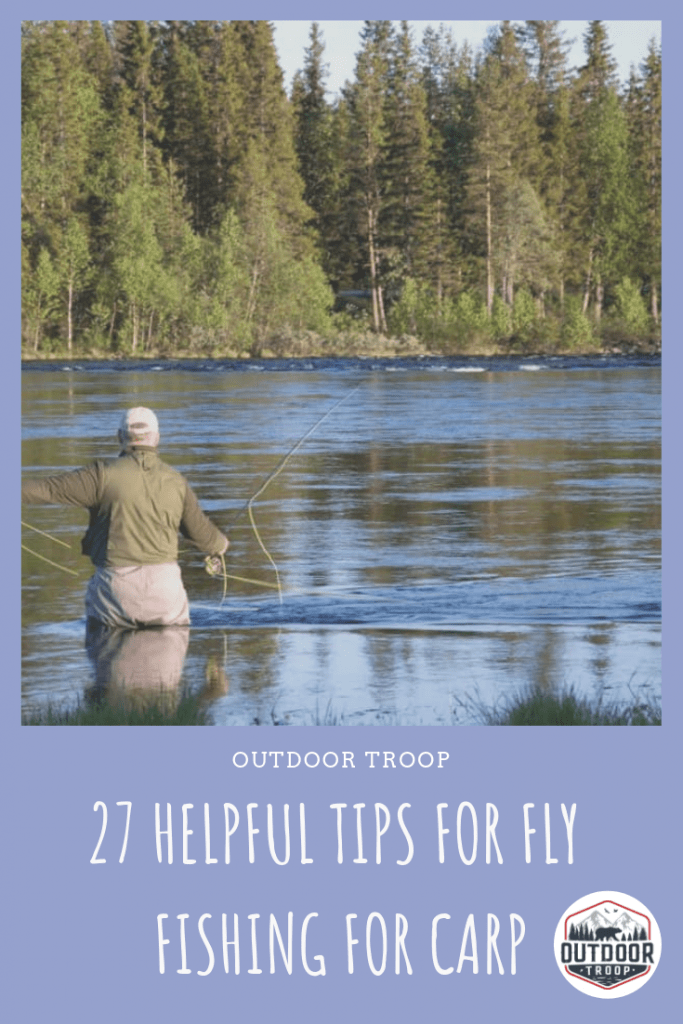
Can you eat carp? A general rule of thumb is that the carp you catch are as safe to eat as the water you caught them in. Carp are known for being bottom feeders that live in dirty water so although you can eat them you probably don’t want to.
